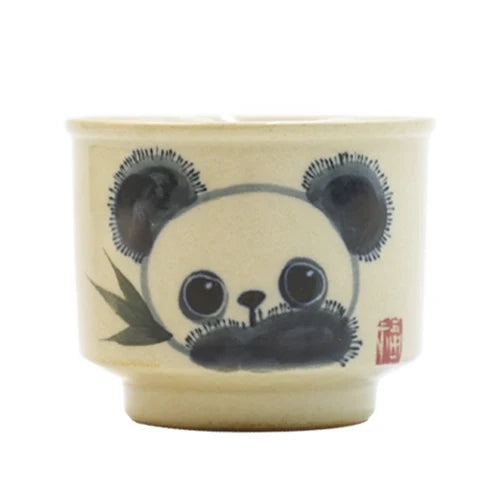There is a considerable variation in the oxidation levels of different varieties of oolong tea, allowing tea enthusiasts to choose oolong teas based on personal preferences. Oolong tea boasts numerous varieties with rich flavors and aromas, and it is recommended to explore and discover the best loose leaf tea that suits individual tastes through tea sampler.
About Oolong Tea

Loose leaf oolong tea originated during the Ming Dynasty, as Anxi tea farmers adapted the green tea production method into the oolong tea-making process. It first spread to northern Fujian and Guangdong provinces before reaching Taiwan, gaining widespread popularity.
Oolong tea belongs to the category of semi-oxidized tea, with a oxidation level between loose leaf green tea and loose leaf black tea. Among China's major tea categories, oolong tea stands out as a distinct and high-quality tea. Oolong tea undergoes processes such as withering, twisting, shaking, semi-oxidation, and baking to produce exceptional tea. Oolong tea has unique brewing methods, and different brewing techniques can result in varying flavors. Oolong tea is also known as "slimming tea" or "beauty tea" and is highly favored by tea enthusiasts.
There is a wide variety of oolong teas, including TieGuanyin, Shui Xian, Mao Xie, Wuyi Rock Tea, Dong Ding Oolong, Rougui, Qi Lan, Luohan Chen Xiang, Fenghuang Shuixian, Lingtou Dancong, and many more.
What is the Oxidation Level of Oolong Tea?
Oxidation refers to the oxidation reaction that occurs when tea leaves come into contact with oxygen in the air. The degree of oxidation is the extent to which the tea leaves oxidize.Based on the oxidation level, oolong tea is generally categorized into lightly oxidized tea (approximately 10%–25%), moderately oxidized tea (approximately 25%–50%), and heavily oxidized tea (approximately 50%–70%).
Different oolong teas, influenced by tea tree varieties and manufacturing processes, exhibit distinct quality characteristics. For instance, lightly oxidized teas resemble green tea and have a light fragrance, while moderately oxidized teas have a more pronounced aroma, and heavily oxidized teas are reminiscent of black tea with a honeyed fragrance. To appreciate these differences, it's best to personally taste and experiment. Explore iTeaworld loose leaf tea, which offer a variety of high-quality and cost-effective oolong tea options worth trying.
Lightly Oxidized Oolong Tea

Lightly oxidized oolong tea has a oxidation level of approximately 10%–25%, with Wenshan Pouchong tea and fragrant Tie Guan Yin being representative examples.
Wenshan Pouchong tea has the lightest oxidation level among oolong teas, resembling green tea but with a unique identity. Its appearance is like twisted strips, with a shiny green color. The infusion has a honey-green, vibrant hue, and the aroma is clear and elegant, resembling floral fragrance. The taste is sweet and mellow, refreshing, with good astringency and strong aftertaste.
Light-aroma TieGuanyin, a representative of the lightly oxidized oolong tea, has a slightly higher oxidation level than Wenshan Pouchong. Its characteristic is the "clear soup, green water," indicating a clear and bright tea soup. Compared to traditional Fujian oolong teas with a "green leaf red border" appearance, light-aroma TieGuanyin has the obvious characteristics of "three greens": green dry leaves, green tea soup, and green leaf base. After brewing, the fragrance is enduring, the tea soup is bright and transparent, the taste is refreshing, smooth, with a strong aftertaste, and a delicate floral return.
Moderately Oxidized Oolong Tea

Moderately oxidized oolong tea has a oxidation level of approximately 25%–50%. Most oolong teas fall into this category, such as traditional strong aroma Tie Guan Yin and Fenghuang Dancong, among others. The difference in appearance and taste between moderately oxidized oolong tea and lightly oxidized oolong tea is significant, attracting consumers with its unique qualities.
Traditional strong aroma Tie Guan Yin, also known as "baked tea," is baked over charcoal, imparting a natural smoky aroma. The dry tea has tightly rolled, dark, and lustrous strips with a deep aroma of charcoal. The tea soup has a pure and even aroma, an orange-yellow translucent color, a rich and mellow taste, and a lasting aftertaste. The leaves are thick, soft, and shiny, presenting a well-organized appearance without easily breaking.
Fenghuang Dancong has well-arranged and straight dry tea, with a yellow-brown color and shiny appearance, displaying red dots like cinnabar. After brewing, it has a long-lasting fragrance with a unique natural orchid scent. The taste is rich, mellow, and refreshing, with a smooth throat-feel and a lingering aftertaste. The tea soup is clear amber, and the edge of the leaves is red, giving it the name "green leaf red border," showcasing a unique mountainous charm.
Heavily Oxidized Oolong Tea

Heavily oxidized oolong tea has a oxidation level of approximately 50%–70%, and representative teas include Da Hong Pao and Bai Hao Oolong.
Da Hong Pao has tightly rolled strips with a green-brown and lustrous appearance. After brewing, the tea soup has a bright orange-yellow color, and the leaves display a beautiful red-green interplay, presenting the typical "green leaf red border" beauty. The most outstanding feature of Da Hong Pao is its rich and lasting fragrance, reminiscent of orchids, with a prominent "rock charm." Da Hong Pao is highly durable, retaining its aroma even after seven or eight infusions.
Bai Hao Oolong, unique to Taiwan, can be considered the most heavily oxidized tea among oolong and green teas. The branches and leaves are connected, and white down is visible, giving it the name Bai Hao Oolong or "Oriental Beauty Tea." With a multicolored appearance resembling a flower, the tea soup is amber-colored, bright, and clear. It has a honey or ripe fruit fragrance, with a noticeable and prolonged sweetness. The taste is sweet, fresh, and mellow.
Different oolong teas, influenced by tea tree varieties and manufacturing processes, exhibit distinct quality characteristics. Tea enthusiasts can choose their preferred oolong tea based on their preferences, savoring a sip and experiencing the enchanting realm of "not yet tasting the dew but first smelling the divine fragrance" as the ancients did.




































































